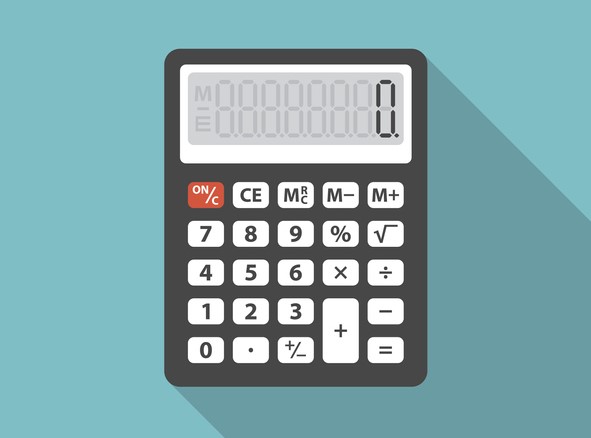What debts can be included in a debt relief order (DRO)?
Which debts are written off with a debt relief order (DRO)? And which debts can’t be included in a DRO? Neil Dingley, an Insolvency Practitioner and Partner of Moore Recovery in Stoke on Trent, explains the criteria when applying for a DRO.

What is a debt relief order (DRO)?
A debt relief order (DRO) is a personal debt solution option available to individuals who meet the specified criteria. They were introduced in 2009 following a government consultation which identified the disproportionate nature of bankruptcy for individuals with little income or assets.
In 2020 there were 20,306 DRO’s granted (down from 27,179 in 2019, likely as a result of the COVID-19 pandemic).
The current criteria to apply for a DRO is individuals must:
- owe less than £20,000
- have less than £50 a month spare income
- have less than £1,000 worth of ‘assets’ – it should be noted that normal household possessions and clothes are not included in assets, and assets are valued at their second-hand value
- you must not own a car worth over £1,000, unless adapted due to disability
- not own a freehold property
It is proposed (subject to parliamentary approval) that from 30 June 2021 this will change, and individuals must:
- owe less than £30,000
- have less than £75 a month spare income
- have less than £2,000 worth of assets (not including a vehicle worth up to £2,000)
Additionally, a DRO can only be applied for if one has not already applied for one in the last 6 years and the individual must have lived in England or Wales for at least 3 years.
It should be noted that only a very small proportion of DRO applications are rejected - much less than 1 per cent.
What is the effect of a debt relief order (DRO)?
As a result of a DRO, creditors included in the application will be unable to take action to recover their debts. This mean that during the period of your DRO (usually 12 months from the granting of the DRO) you do not need to make any payments towards the debts listed in the order. At the end of the DRO the debts will be written off.
Certain restrictions (similar to those in bankruptcy) will also be applied to the individual, such as not acting as a company director and not obtaining credit of more than £500 without disclosing the DRO status.
If during the 12-month period the individual’s circumstances change, such as income increases or further assets are acquired, the DRO may be cancelled. And if the OR considers that the individual was dishonest on their application or that they are uncooperative during the DRO process, it may also be cancelled. However, it should be noted that only 1 per cent of DROs are cancelled.
Which debts are written off with a debt relief order (DRO)?
Debts which can be included in a DRO include:
- household bills (including rent)
- loans
- credit/store cards
- hire purchase agreements
Any bills incurred after the DRO is granted remain payable.
Which debts can't be included in a debt relief order (DRO)?
Some debts however remain payable. You will still need to pay:
- child maintenance
- TV licence arrears
- student loans
- social fund loans
- court fines
It should also be noted that any debts incurred after the DRO is granted remain payable.
How do you apply for a debt relief order (DRO)?
A DRO application must be made via an authorised debt advisor, who will check the individual meets the criteria set out above. A fee of £90 payable to the Official Receiver, the government body who deals with DROs.
Once the application is made the Official Receiver reviews the same and will either accept or reject the DRO.
Assuming it is accepted, the Official Receiver will notify the individual that the DRO has been made and will notify any creditors who are covered by the DRO. The Individual Insolvency Register will also be updated with details of the DRO.
What are the alternatives to a debt relief order (DRO)?
Where a DRO is not suitable, perhaps due to the individual not meeting the criteria set out above, alternatives such as a debt management plan, an individual voluntary arrangement (IVA) or bankruptcy may be considered:
- A debt management plan requires the individual to make agreed monthly payments to their creditors. However, it is not binding on creditors, which could lead to action being taken against the individual by their creditors.
- An IVA is similar to a debt management plan in that monthly payments are made into the arrangement, but it is a formally binding agreement which may offer comfort to the individual as creditors cannot pursue them. However, the terms of the IVA must be met, and are monitored by an IVA supervisor. Should they not the arrangement may fail which could result in renewed pursuit by creditors.
- If the individual has significant assets, creditors may pursue bankruptcy as a final option to ensure all aspects of the individual’s financial status are considered. An individual can also apply for their own bankruptcy if they consider it to be the best/only option.
About the author
Neil Dingley is an Insolvency Practitioner and Partner of Moore Recovery in Stoke on Trent and has a background in information technology and accountancy.
See also
A brief guide to debt relief orders
Everything you need to know about debt management plans
What are the responsibilities and duties of a company director?
Find out more
Options for paying off your debts: Debt Relief Orders (GOV.UK)
Image: Getty Images
Publication date: 25 May 2021
Any opinion expressed in this article is that of the author and the author alone, and does not necessarily represent that of The Gazette.
